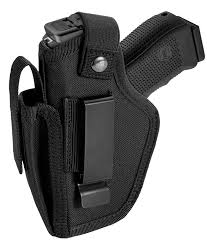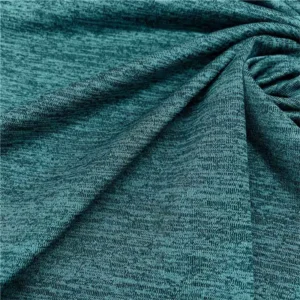How to Choose the Best Gun Holster for Everyday Carry

Whether you’re a seasoned firearm owner or a new concealed carrier, choosing the right gun holster can make all the difference in terms of comfort, safety, and accessibility. With so many options on the market, selecting a holster can be overwhelming—but don’t worry, we’re here to break it down for you.
What Is a Gun Holster?
A gun holster is a device used to hold or restrict the movement of a handgun. It provides a secure and accessible place to carry your firearm, whether for daily concealed carry, open carry, or tactical purposes.
Why Is a Good Holster Important?
Having a reliable holster isn’t just about carrying convenience. It serves several critical purposes:
- Safety: Prevents accidental discharge.
- Retention: Keeps your firearm secure and in place.
- Accessibility: Allows quick drawing when needed.
- Comfort: Makes carrying less of a hassle during extended periods.
Types of Gun Holsters
There are several types of gun holsters available, each designed for different carrying needs and preferences.
1. Inside the Waistband (IWB)
These holsters are worn inside the pants, making them ideal for concealed carry.
Pros:
- Excellent concealment
- Close to the body
- Discreet
Cons:
- Can be uncomfortable when sitting
- Requires a good gun belt
2. Outside the Waistband (OWB)
OWB holsters sit on the outside of your pants and are commonly used for open carry or range use.
Pros:
- Easy to draw from
- Comfortable
- Better airflow
Cons:
- Harder to conceal
- May require a cover garment
3. Shoulder Holsters
Shoulder holsters strap over the shoulders and across the chest, perfect for carrying under a jacket.
Pros:
- Comfortable for seated use
- Great for larger guns
- Offers quick access
Cons:
- Not ideal for hot weather
- Requires a jacket or coat
4. Pocket Holsters
These are small holsters designed to sit inside your pocket while covering the trigger guard.
Pros:
- Lightweight and compact
- Ideal for small handguns
- Extremely discreet
Cons:
- Slower draw
- Limited to compact firearms
5. Ankle Holsters
Worn around the ankle, these holsters are often used for backup guns.
Pros:
- Extremely concealed
- Good for carrying a second firearm
Cons:
- Hard to access quickly
- Uncomfortable for extended walking
6. Appendix Carry Holsters
A subset of IWB, these are worn around the front of the body near the appendix.
Pros:
- Fast draw time
- Comfortable when standing
- Easy to conceal
Cons:
- Uncomfortable when sitting
- Needs proper training for safety
Key Features to Look for in a Gun Holster
Before buying any holster, keep these important factors in mind:
1. Retention
Retention is the holster’s ability to keep the firearm secure. Holsters can be passive (tight fit) or active (mechanical locks). Choose according to your comfort and safety needs.
2. Comfort
If a holster isn’t comfortable, you won’t wear it regularly. Look for options with padding, adjustable angles, and breathable materials.
3. Concealment
For concealed carry, a low-profile holster is key. IWB, appendix, or even pocket holsters are your best bet.
4. Accessibility
Your holster should allow a quick, smooth draw. Make sure the design doesn’t hinder your ability to access your firearm in a hurry.
5. Material
Most gun holsters are made from the following:
- Kydex: Rigid, durable, and moldable plastic
- Leather: Classic and comfortable but requires break-in
- Nylon: Affordable and lightweight, though less durable
Top Holster Brands to Consider
Here are a few popular and reputable brands trusted by firearm owners:
- Alien Gear Holsters – Known for comfort and modularity
- CrossBreed Holsters – Great for hybrid leather/Kydex styles
- Safariland – Offers high-security duty holsters
- Blackhawk – Tactical and reliable options
- Galco – Premium leather holsters
Tips for First-Time Holster Buyers
- Try before you buy – If possible, test how the holster fits and feels with your firearm.
- Train with your holster – Practice drawing and reholstering safely.
- Don’t cheap out – A good holster is an investment in your safety.
- Check compatibility – Not all holsters fit all gun models.
- Adjust as needed – Many holsters offer customizable retention and ride height.
Common Holster Mistakes to Avoid
- Choosing based on looks alone
- Ignoring comfort and fit
- Buying a universal holster for all guns
- Wearing a holster without a sturdy belt
- Skipping proper training with your holster
How to Maintain Your Gun Holster
Taking care of your holster helps it last longer and ensures safety.
- Clean it regularly using a soft cloth
- Avoid exposure to extreme heat or moisture
- Inspect for wear and tear—replace if cracked or damaged
- Treat leather holsters with conditioner to keep them supple
Conclusion: The Right Holster Makes All the Difference
Your holster is just as important as your firearm. The right one offers comfort, safety, and peace of mind, whether you’re carrying daily or heading to the range. Explore different types, test them out, and never compromise on quality. Your safety depends on it.






